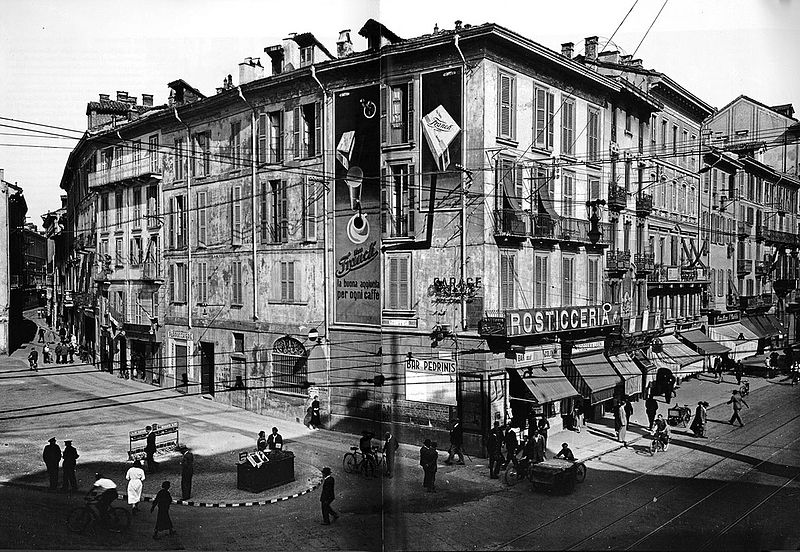The area that extends from Piazza San Babila to Via Manzoni inside the ring of the medieval walls (corresponding to today’s Via Senato, in this portion) is the heart of neoclassical Milan. Towards the end of the 1700s and in the first half of the 1800s Corsia del Giardino (now Via Manzoni) and Via Montenapoleone – around which the historic hamlets of Sant’Andrea, Gesù, Santo Spirito and Borgospesso were gathered – were involved in a renewal project that attempted to reassemble the edification with a unified image, making these streets prestigious locations for the Milanese aristocracy. The leading architects of the day created many noble palaces in the zone, which with the elegance and sobriety of their facades became the new face of the 19th-century city. The preferred meeting place of nobles and the Milanese cultural elite, Via Manzoni soon hosted, in the neoclassical building (1840-1844) at the corner of Via Verdi, the Circolo dell’Unione and Caffè Cova and, starting in 1863, in a building designed by the architect Andrea Pizzala, the Grand Hotel et de Milan, the luxurious hotel where Giuseppe Verdi lived for many years.
The neighborhood did not go through other major changes until the decision was made, in the 1930s, to open up a square around the historic San Babila church. Part of the edification to the south of Via Montenapoleone was thus destroyed to create Corso Littorio (now Corso Matteotti), an artery that would connect Piazza San Babila to Piazza della Scala. With the Albertini Plan (1934) a complete reconfiguration of the area was launched, with the construction of buildings whose architecture was supposed to convey a clear image of modernity. Precisely between Corso Matteotti, Via Montenapoleone and Via Bagutta, in 1937, the city’s first skyscraper was built (the SNIA Viscosa tower by the architect Alessandro Rimini).
Between the two world wars Milan was a rapidly changing city, ready to embrace the new progress of technology and technique, building not only skyscrapers but also futuristic movie theaters close to the historic theaters of the 18th and 19th centuries (from Teatro alla Scala to Teatro Manzoni on Piazza San Fedele, destroyed in 1943). Precisely these works of modern architecture for entertainment, often the result of successful collaborations between engineers, architects and artists (just consider the former Cinema Astra at Corso Vittorio Emanuele II 21, of which only the grand atrium remains, or the Cinema Teatro Manzoni at Via Manzoni 40), brought character to the neighborhood with the elegance of their spaces, enlivening the cultural and social life of the city.
The most representative works of architecture in the period in which Gian Giacomo Poldi Pezzoli and Fausto & Giuseppe Bagatti Valsecchi lived here include:
Grand Hotel et de Milan (1863)
Via Manzoni, 29
Design: Andrea Pizzala
Renovation project (1946): Giovanni Muzio
Palazzo Brentani Greppi (18th-century foundation, reconstructed in 1829-1831)
Via Manzoni, 6
Design: Luigi Canonica
Interior restoration project (1935): Giuseppe De Finetti
Palazzo Gavazzi (1838)
Via Montenapoleone, 23
Design: Luigi Clerichetti
Palazzo della Banca Commerciale Italiana (1906 – 1911)
Piazza della Scala, 6
Design: Luca Beltrami

